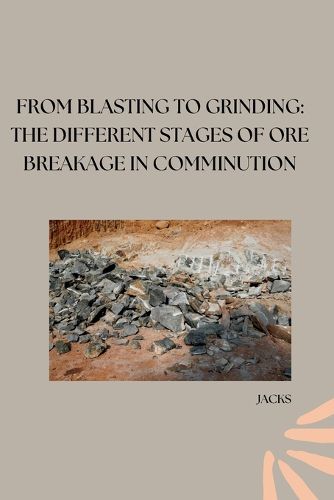Readings Newsletter
Become a Readings Member to make your shopping experience even easier.
Sign in or sign up for free!
You’re not far away from qualifying for FREE standard shipping within Australia
You’ve qualified for FREE standard shipping within Australia
The cart is loading…






Comminution is an essential part of mineral processing which involves the breakage of ore to achieve size reduction. Its aim is to increase the likelihood of separation and liberation of valuable minerals from gangue in subsequent processing stages (Napier-Munn et al., 1996; Fuerstenau, 2003; Wills and Napier-Munn, 2015). Ore breakage in comminution occurs in three forms, namely; blasting, crushing and grinding (Kapur et al., 1997; Le Pham, 2011; Yahyaei et al., 2016). During blasting, ore breakage occurs by means of explosive devices. In crushing, it occurs via mechanical compression of ore against hard surfaces (Unland and Szczelina, 2004). In the case of grinding, ore breakage takes places through a combination of two or more of: impact (ores drop against a rigid body or media drop against ores), abrasion (ores of similar size shear against each other) and attrition (relatively big ores grind smaller materials) (Austin, 2002; Le Pham, 2011; Wills and Napier-Munn, 2015). Comminution is well known to be highly energy-intensive. Previous studies have shown that comminution typically accounts for 50% of the energy consumption in a mineral processing circuit, and globally comminution activity accounts for about 0.2% of the world's electricity supply (Napier-Munn et al., 1999; Ballantyne and Powell, 2014). In addition, the process has been shown to be inefficient, in that a small fraction of the energy supplied is directly utilised for rock breakage (Tromas, 2008). The remaining energy is either lost as heat (Radziszewski, 2013), carbon dioxide (CO2) emissions (Norgate and Haque, 2010) or absorbed by the comminution equipment causing wear and degradation (Weerasekara et al., 2013).
$9.00 standard shipping within Australia
FREE standard shipping within Australia for orders over $100.00
Express & International shipping calculated at checkout
Comminution is an essential part of mineral processing which involves the breakage of ore to achieve size reduction. Its aim is to increase the likelihood of separation and liberation of valuable minerals from gangue in subsequent processing stages (Napier-Munn et al., 1996; Fuerstenau, 2003; Wills and Napier-Munn, 2015). Ore breakage in comminution occurs in three forms, namely; blasting, crushing and grinding (Kapur et al., 1997; Le Pham, 2011; Yahyaei et al., 2016). During blasting, ore breakage occurs by means of explosive devices. In crushing, it occurs via mechanical compression of ore against hard surfaces (Unland and Szczelina, 2004). In the case of grinding, ore breakage takes places through a combination of two or more of: impact (ores drop against a rigid body or media drop against ores), abrasion (ores of similar size shear against each other) and attrition (relatively big ores grind smaller materials) (Austin, 2002; Le Pham, 2011; Wills and Napier-Munn, 2015). Comminution is well known to be highly energy-intensive. Previous studies have shown that comminution typically accounts for 50% of the energy consumption in a mineral processing circuit, and globally comminution activity accounts for about 0.2% of the world's electricity supply (Napier-Munn et al., 1999; Ballantyne and Powell, 2014). In addition, the process has been shown to be inefficient, in that a small fraction of the energy supplied is directly utilised for rock breakage (Tromas, 2008). The remaining energy is either lost as heat (Radziszewski, 2013), carbon dioxide (CO2) emissions (Norgate and Haque, 2010) or absorbed by the comminution equipment causing wear and degradation (Weerasekara et al., 2013).